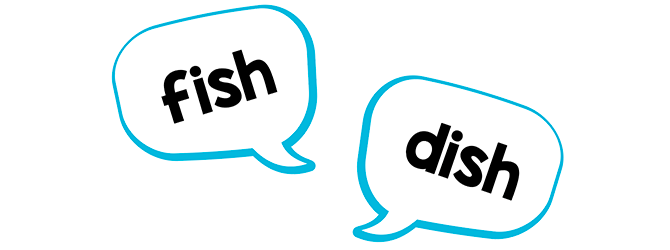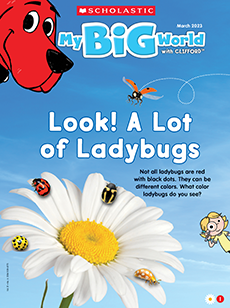Which Is a Fish? Lesson Plan
What We Are Learning
Science Focus:
fish
Theme Vocabulary:
fins, gills, scales
Phonological Awareness:
rhyming words
Prereading:
letter recognition
- Start your lesson by reading Hooray for Fish! by Lucy Cousins. As you read, ask children what they notice. Are all the fish the same, or are they different? Then read the issue to learn about what all fish have in common. paired text
Motor Skills: Go Fish!
Materials: colorful paper, paper clips, magnet, yarn, tape, Fish Template printable from My Big World website, stick or dowel
- This pretend fishing game is reel-y fun!
- To prepare, trace and cut paper fish shapes using the Fish Template printable. Tape paper clips to each fish. Then make a “fishing pole”: Tie a magnet to one end of a piece of yarn, and tie the other end to a stick or dowel.
- Lay the “fish” out on the floor, and have children try to pull them up using the string.
- Once children have gotten a hang of “fishing,” have them try to pick up specific fish. For example, you could tell them to catch a blue fish. You could also draw letters or numbers on the fish and tell them to catch a certain one. fine motor skills

Materials: none
- Help children with their phonological awareness skills—and get them moving—with this rhyming game.
- Have children line up side by side. Stand 15 feet away from them. Tell children they are going to pretend to be fish. But they can swim only when they hear a word that rhymes with fish. Remind them that words rhyme when they end with the same sound. Give an example: Say “fish,” followed by “dish.”
- Then continue with other words that rhyme with fish, like wish, swish and squish. You can even use nonsense words, like gish, mish, lish, pish, and rish! Be sure to use some words that don’t rhyme with fish as well. Once children have reached you, celebrate with a fish dance! phonological awareness
